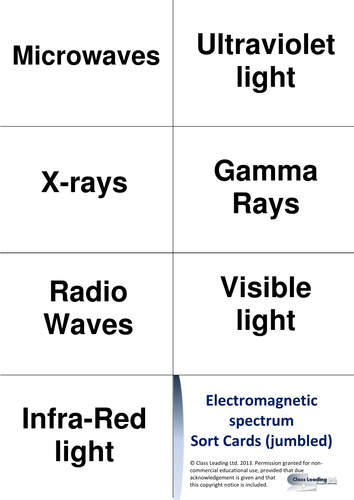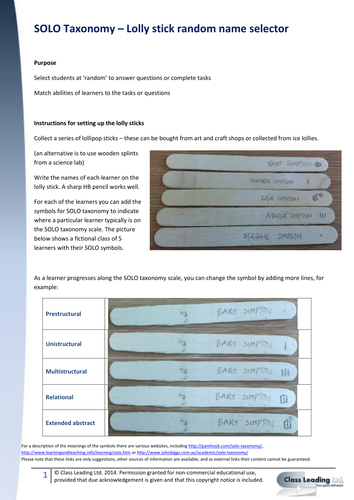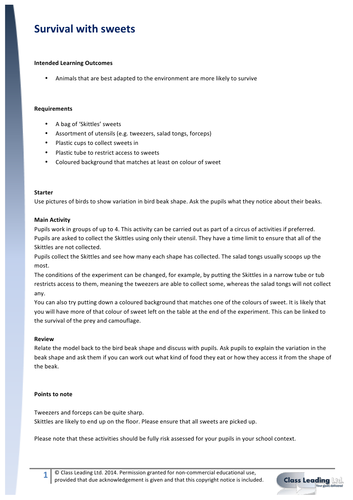314Uploads
260k+Views
194k+Downloads
All resources

Thinking About Goldilocks and the Three Bears
This activity is a context led approach to look at changes over time, in particular how temperature changes as time goes by.
Children find it much more interesting that watching the change in temperature as water cools.
The activity centres around finding that learners will find surprising helping them make progress as a results. There is an engaging start to the activity through a very familiar story.

Thinking About - Coke & Mentos
This activity is part of the ‘Thinking About’ Series.
The sequence aims to think through the investigative process using a very engaging activity. It involves learners thinking through the control and measurement of variables.
It can be used to produce and analyse graphs and think through challenging explanations.
There are also some surprising events for further challenge if different soft drinks are used.
In this activity there is a PowerPoint, an activity guide and making and launching guides (which it is recommended that you laminate!)

Electromagnetic (EM) Spectrum sort cards
These sort cards can be used as a starter or starting point for the topic of the EM spectrum and again as a review/ plenary. They can also be used to help revise the sequence of the EM spectrum. This activity goes well with the EM grid activity.
This resource is part of a sequence with the following three other resources:
This resource
EM spectrum sort cards https://www.tes.com/teaching-resource/resource-6341302
IR remote control https://www.tes.com/teaching-resource/resource-12952897
UV Washing powder https://www.tes.com/teaching-resource/resource-12952892

Animated Electron Arrangements
This resource contains an animated PowerPoint slideshow and a variety of sheets, that provide various levels of scaffolding that can be used to accompany this. This can be used as a teaching tool to help pupils learn the pattern of electron arrangements in the first 20 elements. It can also be used as a revision tool to recap the electron arrangements or as an independent learning tool to help learners explore the arrangements.

Home experiment: Infrared remote control
In this video, which is aimed at KS4 pupils, you can see an infrared remote control. The remote control is pointed at the camera and a button is pressed. You can see the signal from the remote control, even though it would be invisible if you were to look at it with your eyes directly. The camera used is sensitive to infrared and so shows it up on screen. Pupils may be able to repeat this experiment at home, although some cameras include infrared filters to reduce glare from sunlight, so it may not show up properly.
This resource is part of a sequence with the following three other resources:
EM spectrum grid https://www.tes.com/teaching-resource/resource-6341301
EM spectrum sort cards https://www.tes.com/teaching-resource/resource-6341302
This resource
UV lamp and washing powder https://www.tes.com/teaching-resource/resource-12952892

Experiment: UV and washing powder
In this video, which is aimed at KS4 pupils, washing powder is shown under an ultraviolet lamp. This shows the fluorescence from the washing powder as the UV light is absorbed and visible light is emitted from the powder, making it appear much brighter than the washing powder would be if it was simply reflecting the light.
This resource is part of a sequence with the following three other resources:
EM spectrum grid https://www.tes.com/teaching-resource/resource-6341301
EM spectrum sort cards https://www.tes.com/teaching-resource/resource-6341302
IR remote control https://www.tes.com/teaching-resource/resource-12952897
This resource
Bundle

Thinking About - Primary Investigations
In this bundle, two resource packs are available - Thinking About: Coke & Mentos and Thinking About: Goldilocks & the Three Bears.

Experiment - melting ice & freezing wax
In this video, which is aimed at KS3 pupils, a video is shown with changes of state of matter for ice and wax.
The melting ice takes place on a two surfaces, a conductive surface (aluminium pan) and and an insulating surface (wooden chopping board). The video shows how the time of melting differs for each surface.
The experiment also shows wax freezing on the same two surfaces.
Pupils can compare the times and suggest explanations as to why the times differ. The video includes prompts to support their thinking.

SOLO Taxonomy random name selector
This guide explains how you can select students at ‘random’ to answer questions or complete tasks and also match abilities of learners to the tasks or questions. It is a really effective way of differentiating tasks and questions. It offers more flexible ways of selecting names than purely random name generators.

Survival with Sweets
This activity is aimed at supporting Primary Science (particularly those in year 6 in the English National Curriculum). The purpose of the activity is to help children understand the idea of ‘survival of the fittest’ using everyday objects that a primary teacher will be able to get hold of, including sweets. This can be played as a game by children or can also be used by a small group to demonstrate to a whole class.

Classification with Hoops
This activity is aimed at supporting primary science (currently year 4 and year 6 in the primary science national curriculum). In this activity, children are encouraged to look at strategies for classification using physical objects that are accessible to most primary science teachers.

Thinking About - The 3% fat challenge
This activity is part of the ‘Thinking About’ series.
It is designed to provide deep challenge to pupils in terms of their understanding of percentages.
It sets a problem in a work-based context and asks them to explain how they solve the problem. There is also the opportunity to manipulate familiar objects as part of solving the problem.
It is accessible in that pupils can attempt a solution to the problem, yet also challenging as the solution to the problem is not as straightforward as it seems for most pupils.
Many pupils will find percentages challenging and this activity is designed for those who you feel have mastered the idea that percentages involve a fraction out of 100.

Thinking About - Do unbalanced forces cause movement?
This activity is designed to probe preconceptions about the idea that forces cause movement. Children will often think, based on their prior experience of stationary objects that introducing an unbalanced force will make something move in the direct of the force. This activity gives first hand experience of a situation that involves unbalanced forces on a moving object and helps challenge this preconception.

Do Try This At Home: Modelling a 'day' - daytime and night-time
This is a video to support the teaching of space to KS2 pupils. In the video, it describes how you can model daytime and night time to help pupils understand that this is caused by the rotation of the Earth. It also explains the changes that happen during the seasons.

Video - Why do we need to learn about space
This video is aimed at KS2/3 pupils and helps them to think about why they need to learn about space.

Video Experiment: A pair of forcemeters
In this video, you will see an experiment where a pair of identical forcemeters are pulled apart. There are questions that focus pupils on the force pair interaction. It asks pupils to make predictions, then shows what happens in the experiment.

Thinking About: Energy stores & pathways in toys
In this video, which is aimed at pupils in KS3/4, there are a series of toys shown in action. Pupils are asked to consider the energy stores that the toys represent.

Thinking About: A hot-air balloon rising
In this video, which is aimed at KS3/4 pupils, a hot air balloon is shown rising. Pupils are asked to describe and explain what they see and are reminded that there is a heater in the balloon. This can be used as part of a lesson about density, where pupils can use the idea of the hot air being less dense than the cooler air around it, therefore causing the balloon to float.

Experiment: Tangerine mystery
In this video, which is aimed at pupils in KS4, a tangerine is shown. Firstly it is weighed, then is shown floating on water. Then it is peeled, weighed again, and then pupils are asked to predict what will happen when it is placed in water. There is an element of surprise in the video that aims to help challenge preconceptions that they might hold.

Experiment: Making a fruit 'battery'
In this video, which is aimed at KS3/4 pupils, a fruit ‘battery’ is shown. The ‘battery’ has been made with different pairs of metals for the electrodes. Readings are shown in the video for the potential difference (voltage) across the electrodes for each pair. Pupils can then consider the connection between reactivity of the metals and the results of the experiment.




















